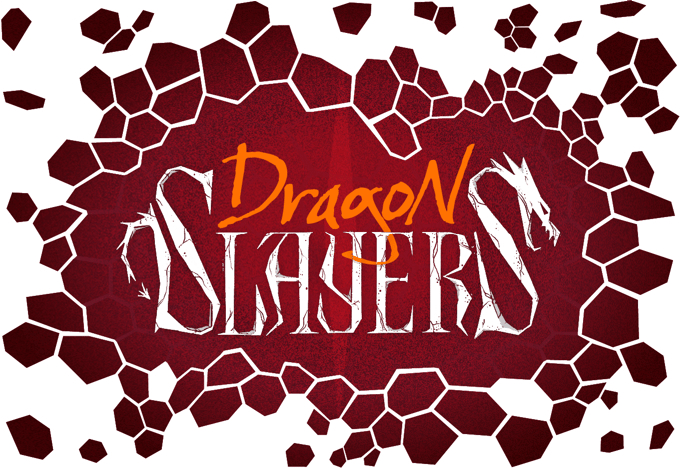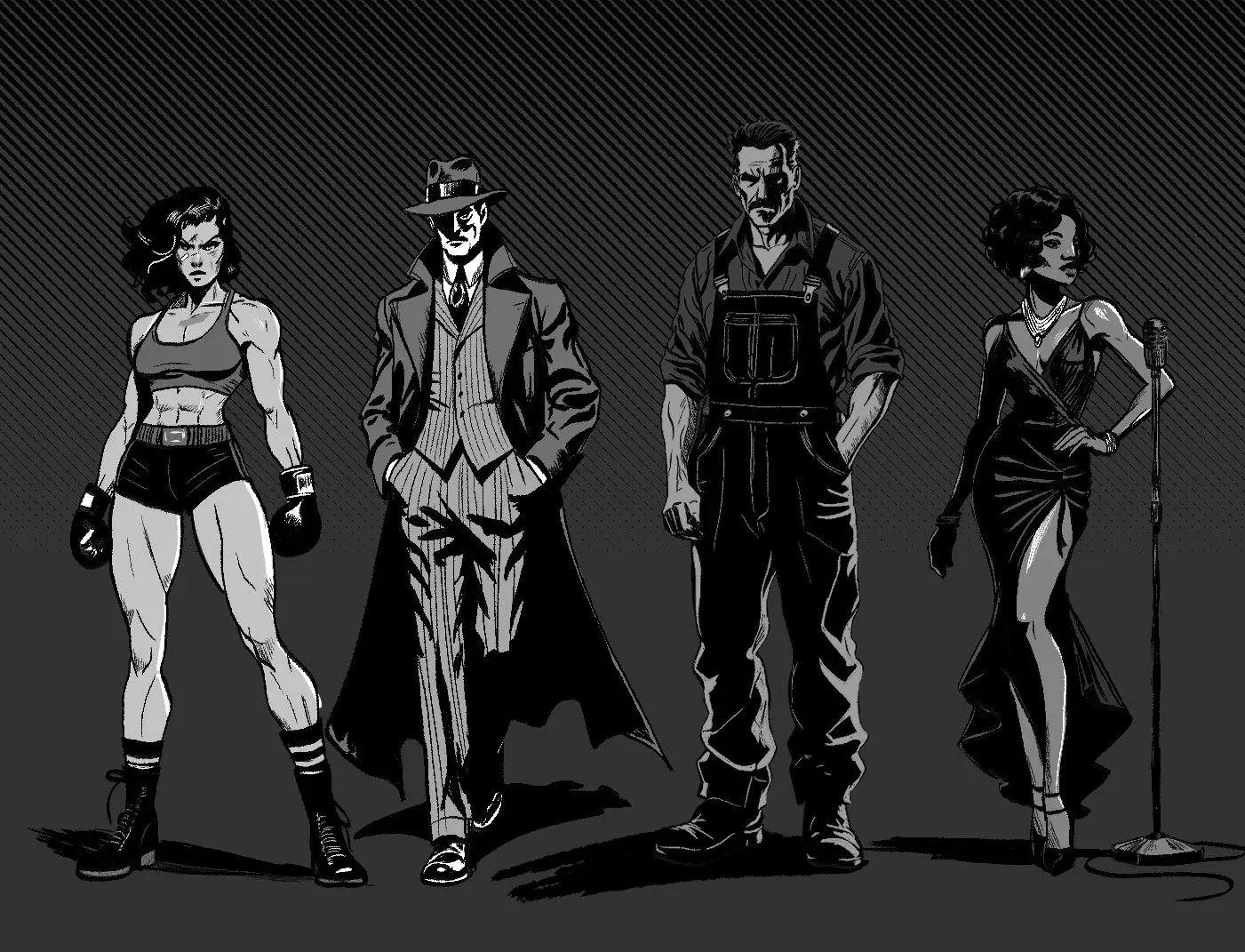- TTRPG Insider
- Posts
- Indie Spotlight: The Moon Shines on Dragon Slayers
Indie Spotlight: The Moon Shines on Dragon Slayers
A closer look at two independent TTRPGs up for crowdfunding this week, including an "asymmetrical" take on fantasy TTRPGs and a 1920s mystery noir game.
Welcome to TTRPG Insider! In this issue, we take a look at two independent TTRPG projects that are up for crowdfunding this week. The first is a fantasy-themed game designed to help new players get into the wild world of independent TTRPGs, while the other is a 1920s romp that mixes 1920s-era adventure with psychics.
Gila RPG’s Spencer Campbell Designs an “Asymmetrical On-Ramp” for Indie RPGs

As a non-game designer in the TTRPG space, I’m forever impressed by the people who regularly sit down and come up with game ideas on the regular. It’s a creative talent that I am forever envious of, and love seeing play out.
One person whom I’ve seen as the epitome of this principle is Spencer Campbell, owner of Gila RPGs and creator of nearly thirty games on various indie platforms. Campbell is regularly crowdfunding his projects, with at least four games successfully funding on Kickstarter in the last year. His latest project, Dragon Slayers, is no different.
Dragon Slayers is the updated version of Slayers, a game that Campbell published in 2021 where players are monster hunters in a cursed city taking on bad guys The rules are adapted and updated to bring his original design to a high fantasy setting. The game is, in many ways, another fantasy-themed TTRPG that offers an alternative to Dungeons and Dragons. But Campbell called it a way to maybe help people who find indie RPGs a bit overwhelming an easy way to start.
Campbell designed Dragon Slayers as an off-ramp for people who primarily play D&D and maybe want to try other games an indie RPG mentality, but enjoy those familiar and comfortable high fantasy trappings.”
One of the ways that Campbell distinguishes Dragon Slayers from other fantasy games is through a focus on making each of the eight classes in the game feel like their own mini-game.
“Each class has a very, very different rule set when it comes to combat,” Campbell told TTRPG Insider. “So everybody is rolling different kinds of dice, different combos, and doing various things.”
For example, a barbarian will focus on building a growing pool of attack dice while taking damage, while the warlock will have to sacrifice parts of themselves to get stronger powers. Each of these classes was designed with an “asymmetrical” approach to gameplay in mind so that they each feel like their own game but intertwine to tell a similar story.
The game is designed with a standard fantasy setting in mind, which is why he provides example quests, monster stats and more. But he doesn’t intend for this to be a table’s “forever game” in the way that someone might treat D&D, Pathfinder or other games made by larger publishers. Rather, it’s a way to let players do something different while enjoying the “comfort food” aesthetic of traditional fantasy.
The game is also likely a one-and-done for Gila RPGs. Campbell described his typical approach to game design as “very chaotic”, where he often spent time exploring many concepts before becoming fixated on one for a short time and turning it into something. Then that concept might be dropped for months, only to be picked up later and turned into a substantial product. It’s why he’s developed more than thirty products in the five-year period that Gila RPG has operated.
Campbell intends to “pare down” the number of projects he is working on on at a time so that he can specifically focus on the one or two that demand his attention at a time, while also using the opportunity to be a stay-at-home dad.
The upcoming projects include an update to Nova, his game about human-piloted exosuits that will add more wargame elements. He’s also planning to develop a a “fantasy mech” game that he described as “highly ambitious.”
Dragon Slayers successfully funded on Kickstarter this week. You can still back the project until August 12.

Whether you’re a designer, content creator or just the biggest fan at your table, TTRPG Insider delivers in-depth reporting, original interviews and regular roundups of the news that you will not find anywhere else. Let us help you become the best designer, player or dungeon master at your table.
Subscribe now and get all the scoops!
Moonshine Mixes Psychics With Prohibition Era Stories

Moonshine by Benjamin Goldman
The 1920s seem to be an era of massive vibes in specific spaces. There’s just something about the decade that gave us the Great Depression, Prohibition, The Great Gatsby and more that captures a lot of writers’ imagination.
The newest addition to this trend is an indie Kickstarter-funded gameset titled Moonshine, written by Benjamin Goldman. Goldman has worked in game design for a long time. He was previously employed by North Star Games and Underdog Games, where he worked as a game designer and graphic designer for projects like Paint the Roses, Oceans and Evolutions. He’s worked in TTRPGs in the past, but this is his first crowdfunded project.
Moonshine is set in an alternate version of Earth’s 1920s, where hints of the supernatural are intermixed with a romanticized version of Americana history and legend. Some humans are manifesting psychic powers, and players will have to balance the risk of using those powers with being discovered by malicious forces such as the U.S. government or criminals.
It operates on a unique system where players always roll 3 d12s, then remove one of the dice based on a character’s stat. The higher the stat, the lower the dice is that you remove from your result. It’s a different approach to gameplay that’s not entirely intuitive, but becomes clearer the more you play with it.

Moonshine’s explanation of its dice-based system.
The game is entirely classless and relies on a point buy approach to character creation that offers a much more flexible approach to gameplay as a whole. Players can adopt several roles in the setting, from criminals to investigators to psychics, thanks to this approach, and Goldman says he’s been able to run a variety of stories using this setting so far.
Goldman presented the powers as one of the elements that distinguishes his setting from other games set in the 1920s. He also emphasized that Moonshine is more a game of “noir mystery” rather than “horror mystery” ala Call of Cthulhu. There are no cryptids, monsters of abominations that threaten the players. Using psychic powers is possible, but it’s more likely to have “narrative consequences” rather than mechanical consequences.
The campaign currently provides city guides for various regions, including Chicago, New Orleans, and Atlantic City, to inform future story development. Goldman hopes to expand the world in the future, but is focused on building out this campaign first.
The game presents an inte alternative to the monster-oriented Call of Cthulhu settings that often focus in the 1920s which seems like an interesting opportunity for storytelling.
Moonshine is available on Kickstarter for backing now, and will be available for backing until the end of August.

That’s it for this issue. Do you have an indie project you want to see featured? Launching a Kickstarter soon? Let us know! We want to feature more stuff like this and help get eyes on it as much as the latest D&D project. Send any scoops, tips or press releases to [email protected].